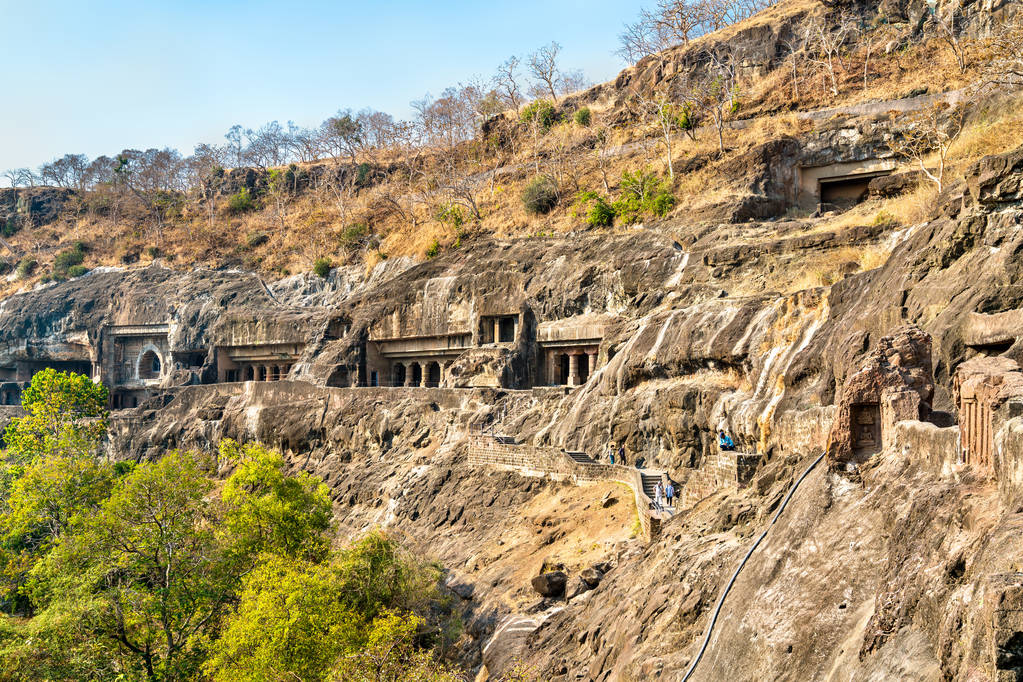When it comes to exploring ancient wonders, the Ajanta and Ellora Caves in Maharashtra stand out as true architectural marvels. These UNESCO World Heritage Sites are treasures of India’s rich cultural heritage and offer a glimpse into the country’s illustrious past. Located in the Aurangabad district of Maharashtra, these caves are a testament to the skill and artistry of ancient Indian artisans and are a must-visit for history enthusiasts and art lovers.
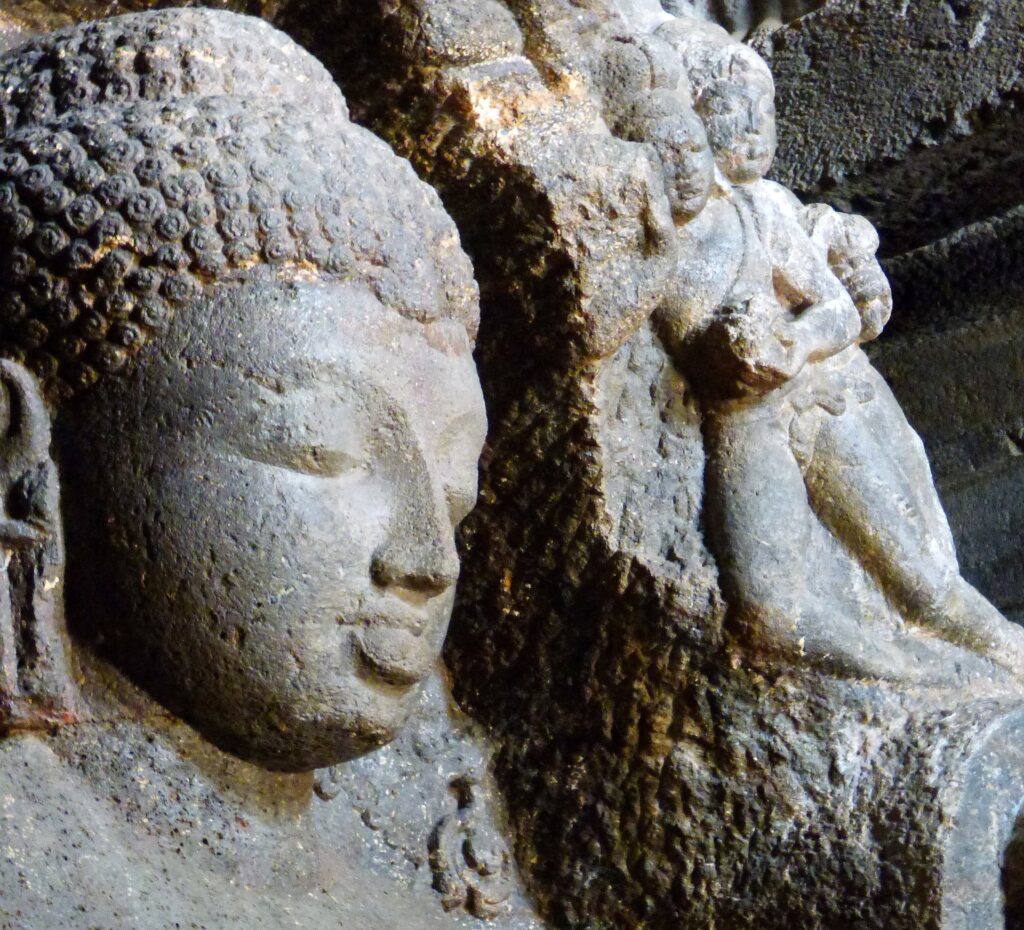
The Ajanta Caves, carved into a horseshoe-shaped cliff face, date back to the 2nd century BCE and represent the beginning of classical Indian art. The caves, a complex of Buddhist monasteries and prayer halls, contain exquisite sculptures, murals, and paintings that depict various events from the life of the Buddha and stories from Jataka tales. Stepping into the Ajanta Caves is like stepping into a different world, where every surface is adorned with intricate carvings and vibrant paintings.
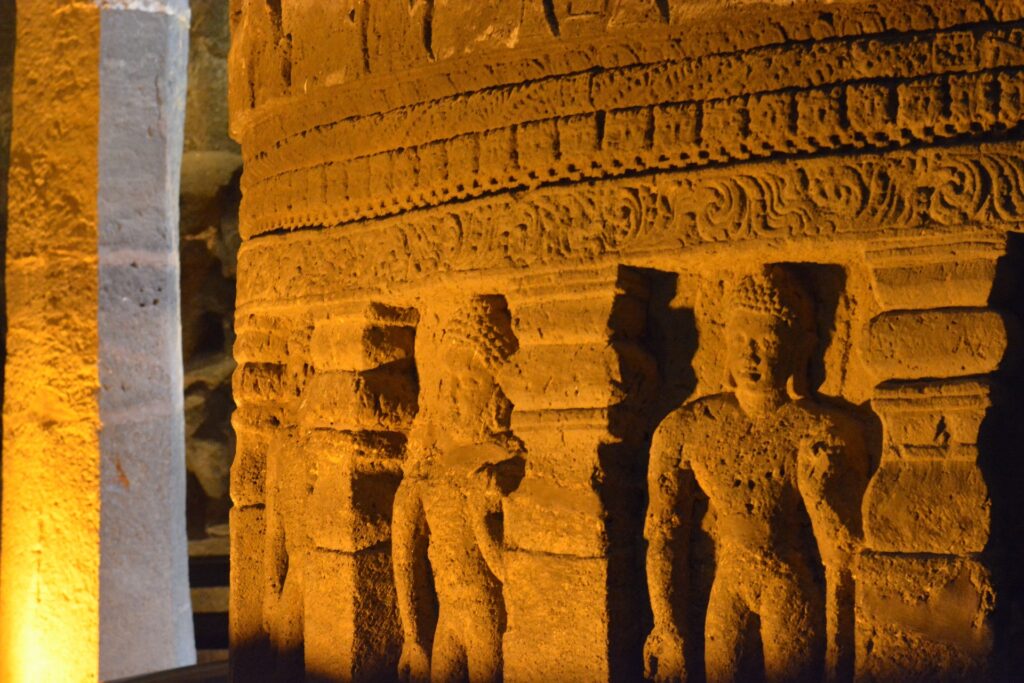
The interior of each cave is a treasure trove of art and spirituality. The most iconic cave, Cave 1, also known as the Vihara, features massive pillars, elaborate ceilings, and beautiful murals depicting scenes from the life of Buddha. The famous painting of Padmapani, the bodhisattva of compassion, is a highlight of Cave 1. The mural, with its delicate brushwork and vivid colors, is a masterpiece that leaves visitors in awe of the artistic skills of ancient craftsmen.
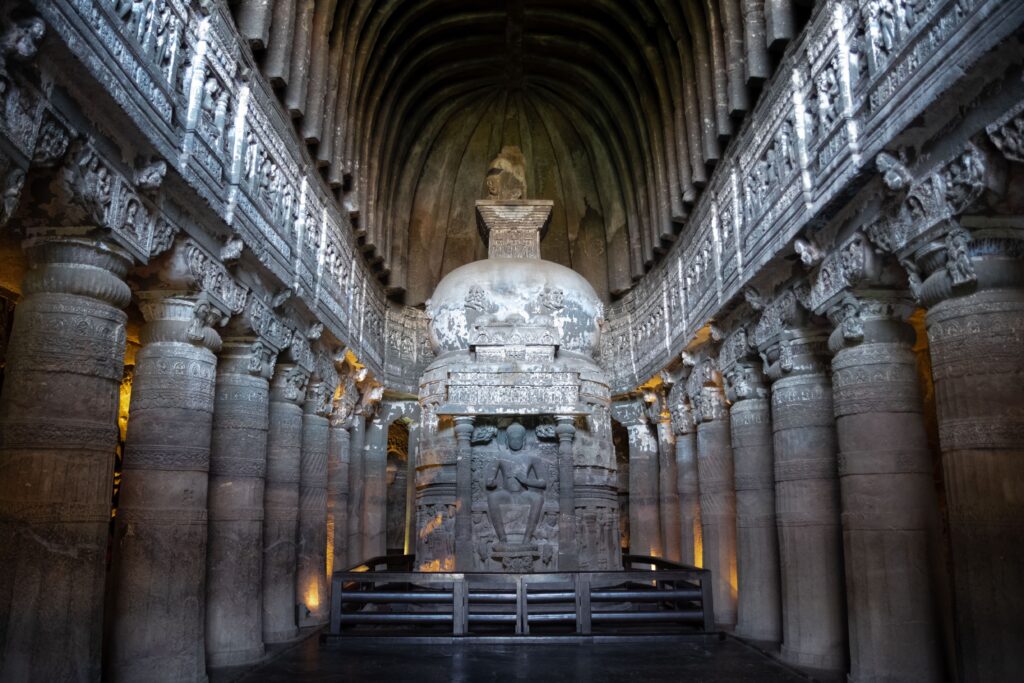
Cave 17, known as the Chaitanya, is another prominent cave in Ajanta. It features a stunning sculpture of the Buddha in a teaching posture and is surrounded by intricately carved pillars and walls. The cave also has beautiful murals that depict scenes from the life of the Buddha, showcasing the artistic prowess of the craftsmen of that time.
More: Read about Ajanta and Ellora Caves in Maharashtra
The Ajanta Caves are not only known for their artistic brilliance but also for their religious and spiritual significance. These caves served as monastic complexes where Buddhist monks lived and practiced their religion. The serenity and tranquility that surround the caves create an ideal atmosphere for reflection and introspection, making it an ideal destination for those seeking solace and spiritual enlightenment.
A visit to the Ellora Caves, located about 30 kilometers from Ajanta, takes you on a journey through centuries of history and art. These caves, carved into the volcanic basalt rock, represent a harmonious blend of Hindu, Buddhist, and Jain art and religion. Ellora Caves, dating from the 6th to the 10th century, are a testament to the religious tolerance and artistic brilliance of ancient India.
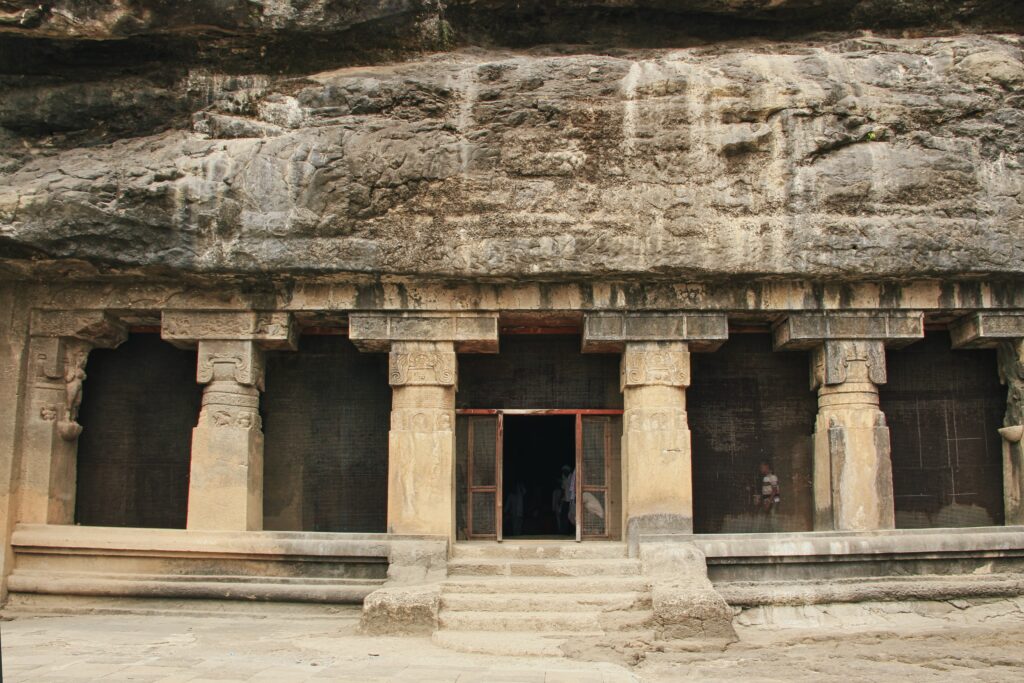
The most impressive cave in Ellora is Cave 16, also known as the Kailasa Temple. Carved from a single rock, this temple is a massive architectural masterpiece that stands as a symbol of the eternal abode of Lord Shiva. The entire temple complex is adorned with intricate carvings, depicting gods, goddesses, and mythological scenes. The level of detail and the sheer scale of the Kailasa Temple is awe-inspiring, leaving visitors spellbound by the craftsmanship and engineering skills of ancient artisans.
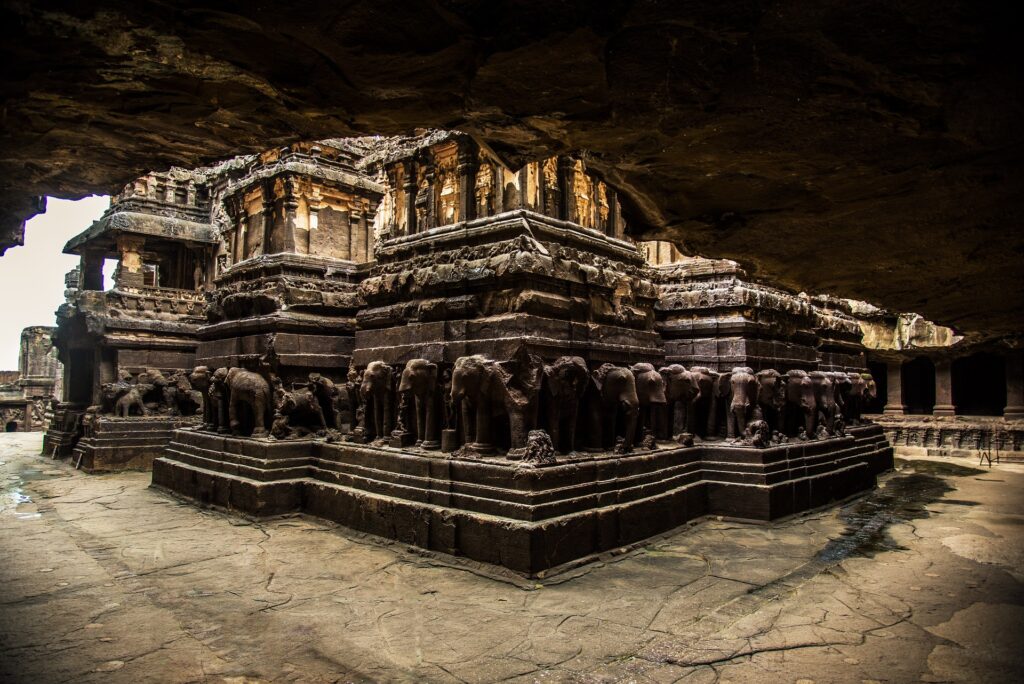
Apart from the Kailasa Temple, the Ellora Caves also have several other remarkable structures. Cave 1, also called the Buddhist Vihara, features intricately carved pillars and walls. Cave 10, the Vishwakarma Cave, is dedicated to the Hindu god Shiva and showcases beautiful sculptures and carvings. Cave 29, the Dumar Lena, is a Jain cave adorned with delicate sculptures and stunning architectural details.
Visiting the Ajanta and Ellora Caves is a journey back in time, providing a glimpse into the rich and diverse cultural heritage of India. These caves stand as a testament to the skill and creativity of ancient Indian craftsmen who transformed solid rock into magnificent works of art. The intricate carvings, vivid paintings, and spiritual ambience of these caves create an immersive experience that transports visitors to a bygone era.
More: Wanted to download Odishashop, visit here
To make the most of your visit, it is advisable to hire a knowledgeable guide who can provide insights into the historical and cultural significance of each cave. Additionally, comfortable footwear is essential, as exploring the caves involves walking and climbing steep stairs.
In conclusion, the Ajanta and Ellora Caves are not just architectural wonders but also a testament to the cultural richness and artistic excellence of ancient India. Exploring these caves is an enriching experience that takes you on a journey through time, offering a glimpse into the religious, artistic, and spiritual traditions of a bygone era. So, if you have a penchant for history and a love for art, make sure to add a visit to the Ajanta and Ellora Caves to your travel itinerary.
FAQ For The Ancient Ajanta and Ellora Caves in Maharashtra
Where are the Ajanta and Ellora Caves located in Maharashtra, India?
Ajanta Caves are located in Aurangabad district of Maharashtra, while Ellora Caves are situated approximately 29 kilometers away from Aurangabad.
How far are the Ajanta and Ellora Caves from Aurangabad?
Ajanta Caves are approximately 100 kilometers away from Aurangabad, while Ellora Caves are situated about 29 kilometers from the city.
Are the Ajanta and Ellora Caves UNESCO World Heritage Sites?
Yes, both Ajanta and Ellora Caves have been designated as UNESCO World Heritage Sites due to their cultural and historical significance.
How old are the Ajanta and Ellora Caves?
The Ajanta Caves date back to the 2nd century BCE to the 6th century CE, while the Ellora Caves were constructed from the 6th to the 12th century CE.
How many caves are there in Ajanta and Ellora?
Ajanta Caves consists of a total of 30 caves, while Ellora Caves comprise 34 major rock-cut shrines.
What makes the Ajanta and Ellora Caves unique?
The Ajanta and Ellora Caves are renowned for their exquisite rock-cut architecture and ancient Buddhist, Hindu, and Jain art. The caves are adorned with beautiful sculptures, mural paintings, and intricate carvings.
Is there an entrance fee to visit the Ajanta and Ellora Caves?
Yes, there is an entrance fee to visit both the Ajanta and Ellora Caves. The fee varies for Indian and foreign tourists, and there may be additional charges for photography and videography.
What is the best time to visit the Ajanta and Ellora Caves?
The months between November and March are considered the best time to visit the Ajanta and Ellora Caves as the weather is pleasant and favorable for exploring the site.

